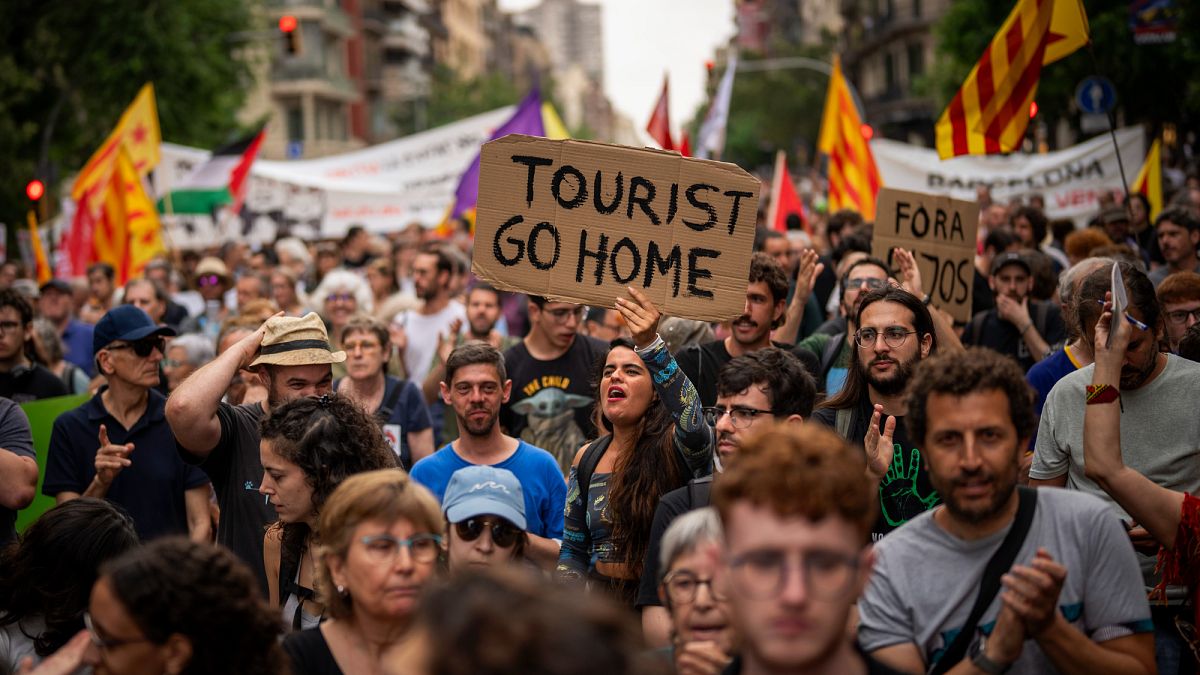Published on
In Barcelona, Lisbon and Naples, thousands of demonstrators took to the streets on Sunday to call for an end to what they call the “touristification” of their cities. But why are holidaymakers such a source of tension?
Sandra Carvão, Director of Economic Intelligence, Policy and Competitiveness at UN Tourism, told Euronews that mass tourism has soared in recent years due to “more disposable income among the middle classes in many countries…more accessible travel in terms of air capacity but also in terms of air fares” and “border crossing facilities that have changed radically over the decades”.
The number of international tourist arrivals has risen from 416 million in 2005 to more than 747 million in 2024, according to UN Tourism.
Between 2019 and 2024, the number of international tourist arrivals rose by 18.1% in Portugal, 12.3% in Spain and 12.2% in France, according to the UN agency.
In Italy, on the other hand, tourist arrivals fell by 10.5% over the same period.
On the plus side, the influx of visitors generates jobs and revenue for tourist regions.
“It’s an employment-intensive sector, so it creates lots and lots of jobs. More than 50% of these jobs are held by women…more than 80% of tourism businesses are SMEs,” Carvão said.
In 2023, Spain earned €80 billion from international tourists, according to UN Tourism.
France earned €61 billion, while Italy and Portugal earned €47 and €23 billion respectively from international tourists in 2023.
But at what cost?
Traffic jams, saturated city centres, rising rents: mass tourism is causing a host of problems for local residents.
The proliferation of short-term furnished accommodation is contributing to soaring property prices, increasingly pricing locals out of the property market.
Between 2015 and 2023, property prices rose by an average of 48% in the European Union, according to Eurostat data.
These increases were highest in Hungary (+172.5%) and lowest in Finland (+5%). House prices rose by 105.8% in Portugal, 47.7% in Spain, 31.3% in France and 8.3% in Italy over the same period.
Other factors are also to blame, such as the rise in construction costs and the increase in rental investment.
Some municipalities, victims of their own success, have taken the problem head-on. Amsterdam has banned the construction of new hotels and Dubrovnik has limited the number of cruise ships that can dock daily.
“The sector itself needs to define the carrying capacity in certain destinations,” says Carvão. “In this situation, new technologies help because you can do a lot with tracking people’s movements. You can have more data and you can have better information.”
“There are policies that involve diversifying demand throughout the year so that fewer people travel at specific times, so there is less pressure on the destination’s resources,” she added.
Holidaymakers can also take action by choosing less saturated destinations. In fact, 42% of tourists are concentrated in just 10 countries worldwide.

